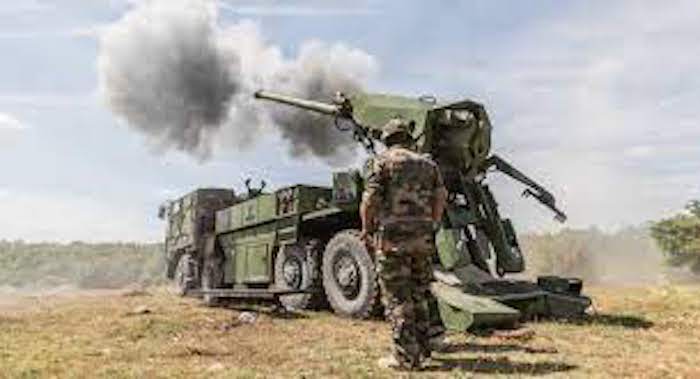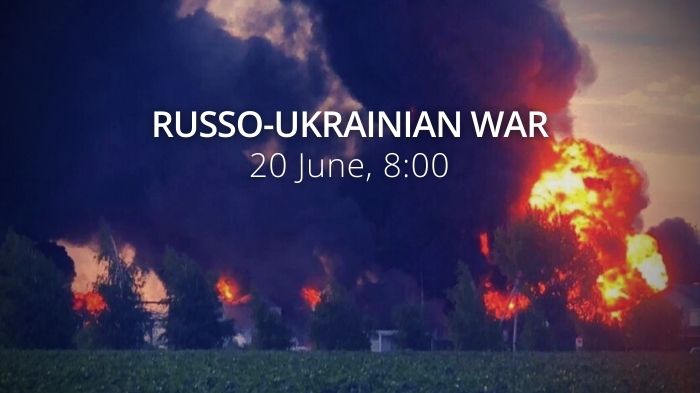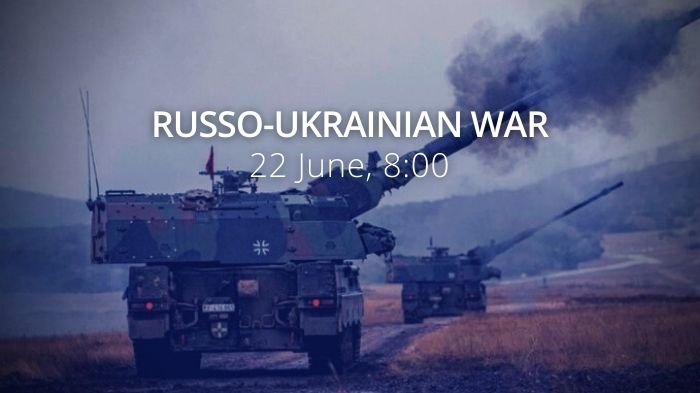On 13 June 2022, Mykhailo Podoliak, the adviser to President Zelenskyy, published a list of weapons needed by Ukraine. Some Ukrainian and Western experts criticized the list, calling it unrealistic. Oleksandr Kovalenko, a military and political analyst, considers these numbers modest and discusses details in an interview with Euromaidan Press’ Zarina Zabrisky.
Being straightforward – to end the war we need heavy weapons parity:
— Михайло Подоляк (@Podolyak_M) June 13, 2022
1000 howitzers caliber 155 mm;
300 MLRS;
500 tanks;
2000 armored vehicles;
1000 drones.
Contact Group of Defense Ministers meeting is held in #Brussels on June 15. We are waiting for a decision.
EP: First of all, this is a hybrid war. We need to take into consideration information warfare discussing any military aspect. Published numbers should not be taken at face value — or, at least, be taken with a grain of salt. Public and deliberate underestimation of the potential confuses the enemy. It is one of the basic disinformation tactics. Politologist Mykola Davydiuk told Current Time that the deliveries and quantities of weapons are not always publicly announced.
“…supply chains are not fully disclosed for one simple purpose: security. This is the safety of our soldiers, this is the safety of the weapons that are coming. And, it seems to me, the most important thing is to do it quickly and imperceptibly so that the enemy does not feel these new supplies. For example, two weeks ago near Izium, Ukrainian troops gave a very good fight to the Russian aggressor near the Siverskyi Donets. When the Russians tried to cross the river, literally in two hours, five hundred Russian soldiers were laid down there. And the secret was precisely that fresh weapons had arrived at that time, but the Russians did not know about it, they could not figure out the supply lines. And, of course, Ukraine was able to show quite good results. Therefore, we make surprises, the West does,” said the political scientist.
OK: Yes, definitely, this concept exists. Also, in some countries, there are strong pro-pro-Russian lobbies or pro-Russian sentiments among the population, and the governments do not want to make these actions public.
Ukraine will use this tactic as it is needed for security. A good example: right before the war, the Zelensky government did not sound the alarm, proposing to “BBQ instead.” The reason is simple: the government did not want to sow panic. It prepared for the invasion without publicity. In fact, the Russian occupiers could not carry out their plans due to the classified preventive measures and wrote on social media that it was difficult for them to move through the Chernihiv and Kyiv Oblasts. Defensive lines on their way slowed them down. Their goal was to advance in columns and approach Kyiv as soon as possible. Instead, the movement of the columns was stopped, the tanks were burned, and the Russian soldiers were forced to use artillery at every kilometer. This was the result of the “BBQ” strategy. So relying on the numbers is not advisable.
EP: We can discuss Ukraine’s needs and Podoliak’s requirements, to quantify the supplies.
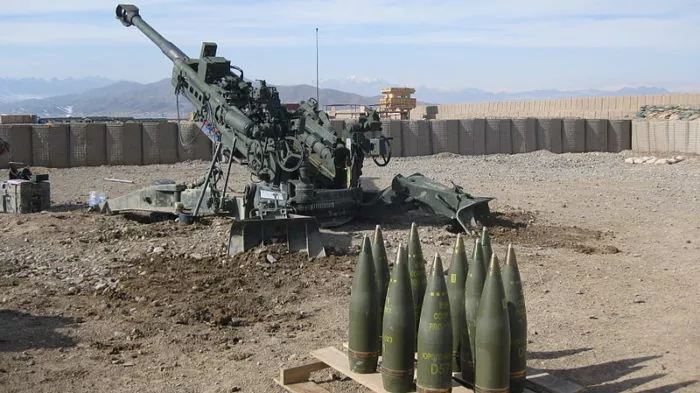
OK: 1000 155 mm caliber howitzers is a realistic requirement, but Podoliak did not give any specifics. What type of howitzers did he mean: towed howitzers or self-propelled artillery? Some experts objected to this number, noting that the US Army has about 1,000 M777 in service. The answer is simple: Podoliak’s 1,000 howitzers is a general number, not a specific request for M777. 155 mm howitzers list includes more weapons than just the M777 howitzer and the US-produced and used M109s, in particular:
- Polish AHS Krabs (already being supplied);
- French Caesars (already being supplied; Macron has just announced a new party of six)
- Italian FH-70s (already being supplied)
- Slovak Zuzana and 152 mm Czech DANA (both not yet supplied)
- UK AS-90 (already being supplied)
- German PzH 2000 (promised to be transferred but not sent yet.)
Ukraine has already received 120 M777 units from the US and a number of H-109 self-propelled artillery guns. If we consolidate the existing and future supplies, we can arrive at 1,000 units.
500 tanks. Considering our losses, this is an important number. The Russian Army’s losses are much greater. Yet, Russia has thousands of Soviet-made tanks in storage. Even though these T-62 tanks are very old, produced in the 1960s-70s, they are already arriving at the front en masse. The Ukrainian Army has already received approximately half of 500 and should request 700.
Finding tanks and MLRS
Germany will not supply Leopards because of its really influential Russian lobby. When Spain wanted to supply Ukraine with 40 Leopard 2 A4 tanks, Germany blocked this decision using its manufacturing ban right. When Poland handed over 230 T-72 and M-1 Abrams tanks to Ukraine. Germany was supposed to provide Poland with modern modifications of Leopard 2, 2 A6, and 2 A7. When Warsaw fulfilled its commitment and requested new equipment, German officials offered the old modifications, A4 and A5, claiming that the Bundeswehr did not have enough A7 and A6. Warsaw expressed outrage, and diplomatic tensions between Poland and Germany ensued in May 2022.
The UK is unlikely to provide Challenger 2 tanks as it only has 200 combat-ready units in service.
The US will have logistics issues sending 50 M1 Abrams tanks to Ukraine. Training crews will take more than six months.
The solution is in eastern European countries that own a total of about 1000 Soviet-made T-72 tanks in storage.
- Poland has already removed from storage and handed over more than 230 of its Soviet-made T-72 M-1 tanks.
- The Czech Republic has already transferred more than 40 T-72 M tanks, also from storage.*
- Slovakia hands over its T-72 tanks.*
*Czechoslovakia had about 850 T-72 tanks. After the country split into the Czech Republic and Slovakia, these weapons were divided and a part was sold and the other remained in storage. At the moment, these countries have several hundred units of these tanks in storage.
300 multiple launch rocket systems (MLRS) is a good number. Again, the type of the weapon needs to be clarified.
If we are talking about the Western-made M-270 and M-142, getting 300 is quite realistic. The public archives of Lockheed Martin for 2015 show that in the US, more than 1300 MLRS systems were produced, including 850 M-270 units. So I am not so sure about the data of the experts who claimed an insufficient number (600 MLRS) in the US. I have not verified these numbers at the US warehouses, of course. In addition, almost every NATO country and the US partners outside the NATO bloc have the M-270 and M-142 MLRS systems in service. We can get 300 MLRS systems if each partner country provides four units.
Trending Now
If we are talking about Soviet-made MLRS, BM-21 Grad, BM-30 Smerch, and BM-27 Uragan, they can be provided by the countries of eastern Europe.
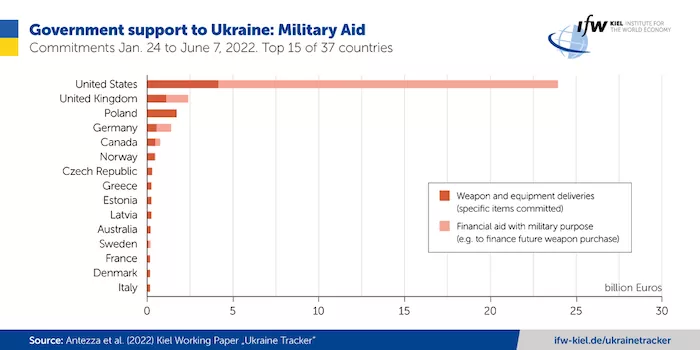
The advantages of the high-precision and long-range M-270 and M-142 MLRS systems over their Soviet counterparts:
- Universality. M-270 and M-142 MLRS systems are used as launchers for rocket munitions and launchers for tactical missiles on the same installation. In Soviet units, these functions are separated. Grad, Smerch, and Uragan are units for rocket munitions. Tochka U, Iskander are for tactical missiles.
- Versatility, high accuracy, and high technology. A deviation of only 5m from the target and the firing range of 70 km of western weapons can significantly change the situation at the front.
- The average range of the long-range, high-precision barrel-type artillery weapons Ukraine currently has in service is 40 km. (Polish AHS Krabs, French Caesars (45 km range), Slovak Zuzana and 152 mm, Czech DANA, US M109, M777. etc)
- Soviet self-propelled gun units, for the most part, offer an average 20–25 km range.
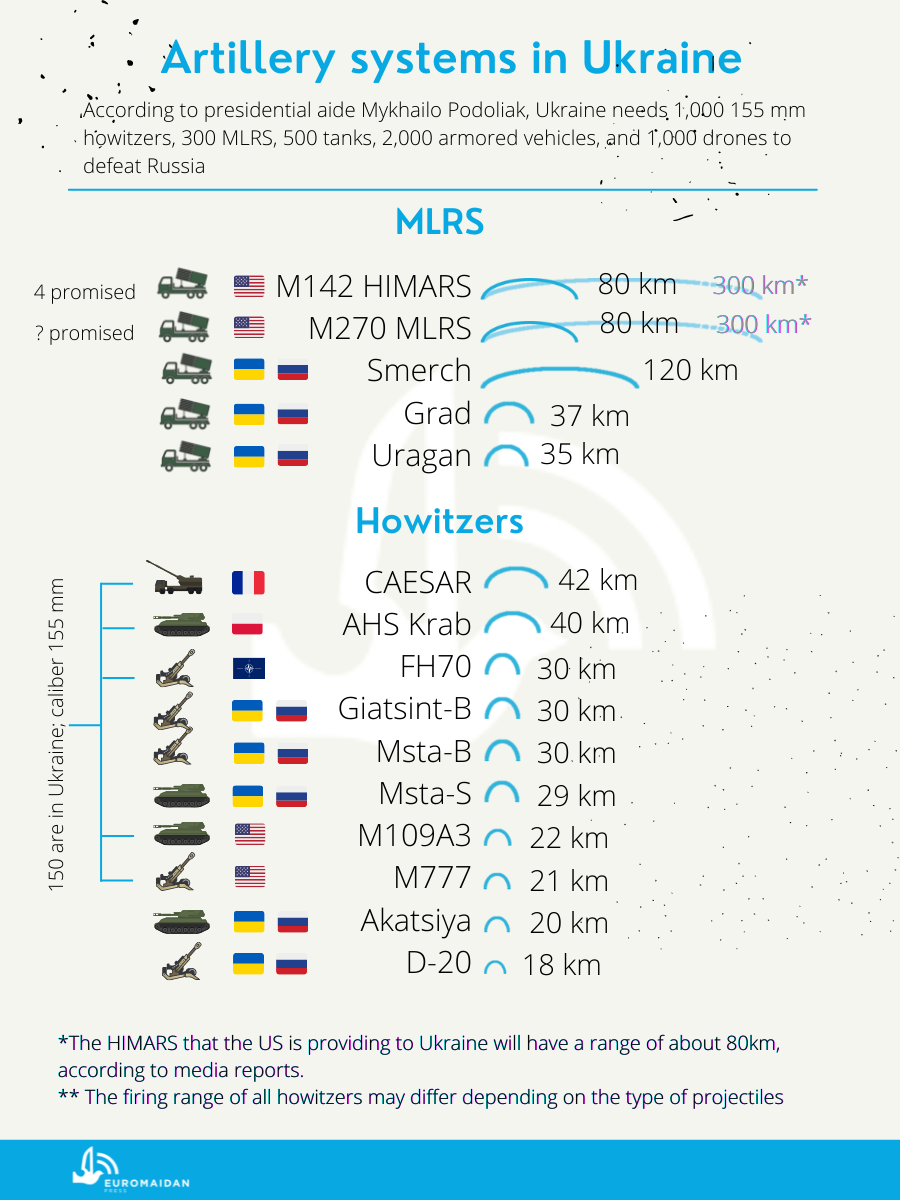
Security Buffer Factor
Soviet self-propelled gun units, for the most part, offer an average 20–25 km range as opposed to the 70 km range of M-270 and M-142. Due to this discrepancy in firing ranges, the security buffer must be taken into consideration.
The Soviet self-propelled guns are located approximately 10 km behind the front line in order to avoid the enemy’s counter-battery weapons, aircraft attack or being captured in the event of fast movement at the front.
The Russian army has poor logistics and command and control systems. Being well aware of the 30 km destruction range rule, they have developed a pattern of placing their command posts, ammunition warehouses, fuel and lubricants depots, personnel, and equipment, precisely within the 30 km distance. During the four months of the war, they have already adapted to the 30 km distance from the front line and have developed procedures for the relocation of the command troops, the reinforcements transfer, and supplies.
If the new type of MLRS is introduced, the Ukrainian army can fire from a 70 km distance. This will drastically change the logistics situation for the Russian army as they will have to change their disposition from a familiar 30 km to 50-60 km distance from the front line. Such change will impact their entire command and control system. They will need to move the main control functions, command posts, and supply depots away from the front line. Their logistics will collapse. Coordinated, complex systems will be disrupted and become more cumbersome. Consequently, the decision-making process and the command chain will be slowed down. Deliveries will have to be even more stretched out as compared to the current situation.
The situation will change, and not in the Russian Federation’s favor. The Ukrainian counter-offensive potential will increase significantly and immediately.
APCs and drones
2,000 armored personal carriers/armored vehicles are also realistic. Ukraine’s international partner countries already supply armored vehicles:
- M113 from the US, from US partners, and from other partners;
- Mastiffs from the UK;
- Bushmasters from Australia.
We find Germany stalling again in this department: Greece intended to transfer 100 units of BMP-1A1 to Ukraine, and Germany agreed to replace them with the Marders. For the fourth month, these weapons have not been supplied, though. Greece cannot give away its armored vehicles without receiving a replacement from Germany due to the tensions with Türkiye.
1,000 drones. During four months of the war, the US sent to Ukraine 700 kamikaze drones. Ukraine has received UAVs, both reconnaissance and strike types, as well as striking ammunition.
Anti-ship missiles systems
Anti-ship missile systems are crucial, taking into account the need to de-blockade of the Black Sea. These systems play an important role in the first stage of the de-blockade as they will keep the Russian Black Sea Flotilla 200 — 280 km away from Ukraine's coastline. We have received Harpoon anti-ship missile systems. We have received two coastal complexes placed on a land-type chassis but we need no less than twenty. Launchers should be placed along the entire coastline of the Odesa Oblast to provide a buffer for our coastal economic zone.
Overall, this list is needed. It helps to compensate for the losses of the Armed Forces of Ukraine sustained over the last four months. Obtaining these weapons will speed up Ukraine's developing counter-offensive operation and create an advantage on the battlefield.
 Oleksandr Kovalenko, a military-political analyst at Information Resistance, a non-governmental Ukrainian project. Created in 2014 after the Russian annexation of Crimea, Information Resistance works on countering external threats in cyberspace, with a special focus on the military, economic, energy, and IT security sectors. The Information Resistance provides analytics, working in close collaboration with Ukrainian and foreign experts from NGOs, and Ukrainian and international organizations. For eight years, the Information Resistance group refuted the “information dumps” of the leading Kremlin propagandists and shed light on the nature and mechanisms of creating false narratives.
Oleksandr Kovalenko, a military-political analyst at Information Resistance, a non-governmental Ukrainian project. Created in 2014 after the Russian annexation of Crimea, Information Resistance works on countering external threats in cyberspace, with a special focus on the military, economic, energy, and IT security sectors. The Information Resistance provides analytics, working in close collaboration with Ukrainian and foreign experts from NGOs, and Ukrainian and international organizations. For eight years, the Information Resistance group refuted the “information dumps” of the leading Kremlin propagandists and shed light on the nature and mechanisms of creating false narratives.
Related:
- Race against time: Ukraine runs out of ammo, calls for MLRS, artillery – US “willing to provide” everything needed
- What weapons for Ukraine would help it win the war against Russia
- Many countries ask to keep the weapons they give Ukraine a secret – Ukraine’s RNBO chief Danilov
- Why long-range Western MLRS can become a game-changer for Ukraine
- 12 reasons why the West should arm Ukraine, now!

